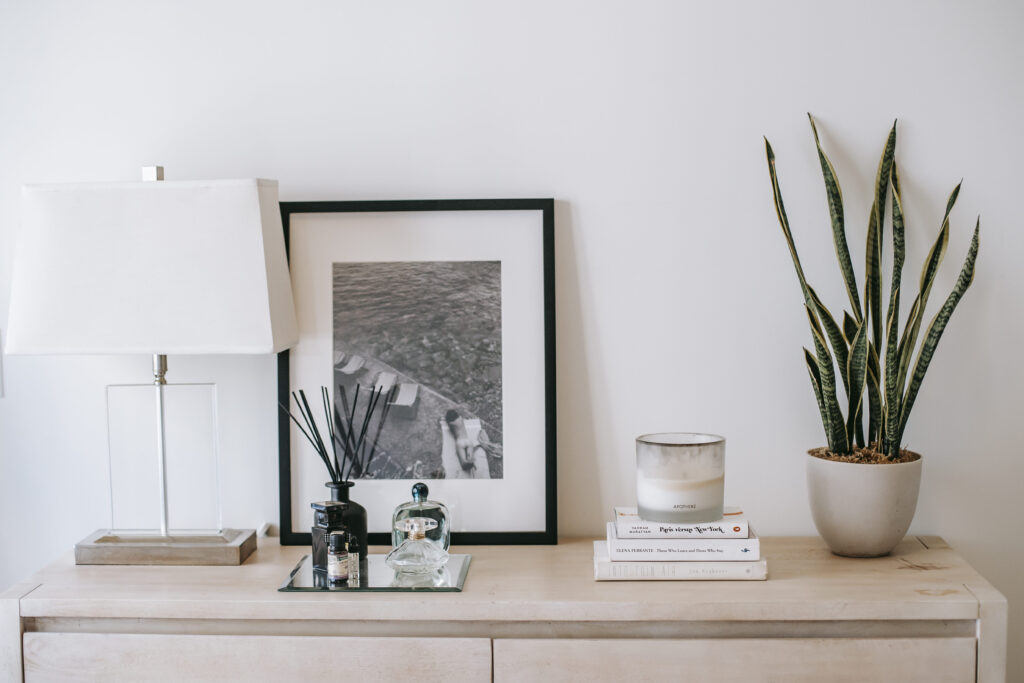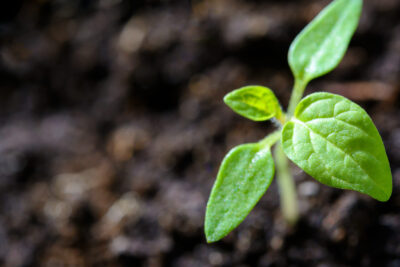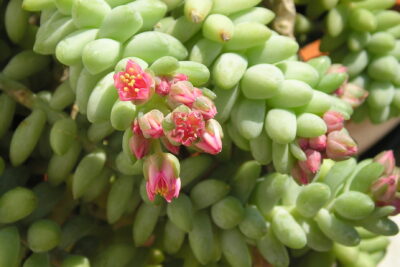
Rare Succulent Collection: Unique Cacti & Pineapple Varieties

Welcome to our article on rare succulent collections! Succulents are a popular choice for plant enthusiasts due to their unique and eye-catching appearance. However, within the world of succulents, there exists a realm of rare and unique varieties that are highly sought after by collectors. We will explore some of the most extraordinary and hard-to-find succulent specimens, including cacti and pineapple varieties.
In the following paragraphs, we will delve into the fascinating world of rare succulents. We will start by discussing some of the most sought-after cacti, such as the moon cactus and the cristate cactus, which feature stunning colors and unusual growth patterns. Then, we will move on to explore pineapple succulents, which are known for their striking resemblance to the fruit they are named after. We will discuss different types of pineapple succulents, their care requirements, and how to propagate them. So, if you are a succulent enthusiast or simply interested in learning about the extraordinary world of rare succulents, this article is for you!
- Plant your succulents in well-draining soil to prevent root rot
- Water your succulents sparingly, allowing the soil to dry out between waterings
- Provide your succulents with plenty of sunlight to ensure healthy growth
- Use a balanced fertilizer specifically formulated for succulents to promote vibrant colors
- Protect your succulents from extreme temperatures by providing adequate insulation
- Keep an eye out for pests such as mealybugs and scale insects, and treat them promptly
- Propagate your succulents by taking stem cuttings or dividing offsets for a larger collection
- Rotate your succulents periodically to ensure even growth and prevent leaning towards the light source
- Remove dead or decaying leaves to maintain the overall health and appearance of your succulents
- Consider placing your succulents in decorative pots or containers to enhance their aesthetic appeal
- Frequently Asked Questions
Plant your succulents in well-draining soil to prevent root rot
Succulents, including cacti and pineapple varieties, are known for their ability to store water in their leaves and stems, making them perfect for those who tend to forget to water their plants regularly. However, one crucial aspect to keep in mind when growing succulents is the importance of using well-draining soil.
Well-draining soil is essential for succulents because it helps prevent root rot, a common problem that occurs when the roots are constantly sitting in water. When succulent roots are constantly saturated, they become susceptible to fungal diseases and can eventually rot, leading to the demise of the plant.
To ensure proper drainage, you can either purchase a specialized succulent or cactus mix from a garden center or create your own well-draining soil mix. A typical succulent mix consists of a combination of potting soil, perlite, and coarse sand. This combination allows excess water to flow through quickly, leaving the roots in a well-aerated environment.
Here's a simple recipe for a DIY succulent soil mix:
 Discover the Stunning Flowering Succulents that Transform Gardens
Discover the Stunning Flowering Succulents that Transform Gardens- Mix 2 parts of regular potting soil with 1 part perlite.
- Add 1 part coarse sand to the mixture.
- Thoroughly combine the ingredients until well-incorporated.
Remember, the key is to strike a balance between water retention and drainage. Succulents prefer soil that is relatively dry between waterings, allowing their roots to breathe and preventing overwatering issues.
When planting your succulents, make sure to choose a pot with drainage holes to allow excess water to escape. If you have a container without drainage, consider adding a layer of rocks or pebbles at the bottom to create a reservoir for excess water.
Important tips for planting succulents:
- Select a pot that is slightly larger than the root ball of your succulent.
- Gently remove the plant from its nursery pot, being careful not to damage the roots.
- Place the succulent in the center of the pot and fill in the gaps with your well-draining soil mix.
- Press the soil lightly to secure the plant in place.
- Avoid burying the succulent's leaves or stem in the soil, as this can lead to rot.
By providing your succulents with the right soil and proper planting techniques, you can ensure their health and longevity. Remember, a well-drained environment is key to preventing root rot and keeping your rare succulent collection thriving.
Water your succulents sparingly, allowing the soil to dry out between waterings
When it comes to watering your succulents, it's essential to remember that they have unique water requirements compared to other plants. Succulents are known for their ability to store water in their leaves and stems, allowing them to survive in arid conditions. Therefore, it's crucial to water them sparingly to prevent overwatering, which can lead to root rot and other issues.
One of the most important rules for watering succulents is to allow the soil to dry out completely between waterings. This is because succulents prefer a well-draining soil that doesn't hold onto moisture for extended periods. To determine when it's time to water your succulents, you can simply stick your finger into the soil up to the first knuckle. If the soil feels dry at that depth, it's time to give your succulents a drink.
 Popular Indoor Succulents: Common Varieties for Your Home!
Popular Indoor Succulents: Common Varieties for Your Home!Another helpful tip is to water your succulents in the morning or early afternoon. This allows any excess moisture on the leaves or stems to dry out before nightfall, reducing the risk of fungal diseases. Additionally, watering in the morning ensures that the succulents have ample time to absorb the water and store it before the sun's heat intensifies.
When watering your succulents, it's important to do so thoroughly. This means watering until you see water flowing out of the drainage holes at the bottom of the pot. This ensures that the entire root system gets hydrated and helps flush out any accumulated salts or toxins in the soil.
Signs of Overwatering Succulents
Overwatering can be detrimental to your succulents, so it's crucial to be aware of the signs that indicate your plants are getting too much water. Some common signs of overwatering include:
- Yellowing or wilting leaves: If your succulent's leaves start to turn yellow or feel mushy, it's a sign of overwatering. The leaves may also appear translucent or feel soft to the touch.
- Root rot: Overwatering can cause the roots to rot, leading to a foul smell and a black or brown coloration. If you notice these signs, it's important to act quickly to save your succulent.
- Mold or fungal growth: Excessive moisture can create a breeding ground for mold and fungus. If you observe any fuzzy growth or a musty smell, it's a sign of overwatering.
If you notice any of these signs, it's crucial to adjust your watering routine immediately. Allow the soil to dry out completely and reduce the frequency of watering. In severe cases, you may need to repot your succulent into fresh, well-draining soil to prevent further damage.
Provide your succulents with plenty of sunlight to ensure healthy growth
Succulents are known for their ability to thrive in dry conditions, making them a popular choice for busy gardeners and plant enthusiasts alike. One of the key factors in maintaining a healthy succulent collection is ensuring they receive enough sunlight. Here are some tips to help you provide your succulents with the right amount of sunlight:
1. Understanding the sunlight requirements
It's important to understand that different succulent varieties have varying sunlight requirements. While most succulents prefer bright, indirect sunlight, some species can tolerate full sun exposure. Research the specific needs of each succulent in your collection to determine the ideal amount of sunlight they require.
 Discover the Most Popular Arctic Ice Succulent Varieties
Discover the Most Popular Arctic Ice Succulent Varieties2. Finding the perfect location
Identify a suitable location in your home or garden where your succulents can receive adequate sunlight. South-facing windowsills or outdoor areas with partial shade are often ideal for succulent cultivation. Consider the climate of your area and make adjustments accordingly to prevent your succulents from getting sunburned or overheated.
3. Monitoring the intensity of sunlight
While succulents thrive in sunlight, excessive exposure to intense rays can be harmful. Strong afternoon sun can scorch the leaves and cause irreversible damage. Use sheer curtains or blinds to filter the sunlight if necessary. If your succulents are outdoors, consider providing them with some shade during the hottest part of the day to protect them from intense sunlight.
4. Rotating your succulents
To ensure even growth and prevent one side of your succulent from receiving more sunlight than the other, rotate your plants every few weeks. This will help prevent your succulents from leaning towards the light source and promote balanced growth.
5. Observing your succulents
Pay close attention to your succulents and observe their response to the sunlight they receive. If you notice signs of stress, such as bleaching or wilting, it may indicate that your succulents are receiving too much or too little sunlight. Adjust their placement accordingly to ensure they receive the optimal amount of light.
Remember, providing your succulents with plenty of sunlight is crucial for their health and growth. By understanding their sunlight requirements and implementing the necessary measures, you can maintain a thriving and unique collection of succulents, showcasing their vibrant colors and intriguing shapes.
Use a balanced fertilizer specifically formulated for succulents to promote vibrant colors
When it comes to maintaining a rare succulent collection, one of the key factors is using a balanced fertilizer specifically formulated for succulents. This not only helps in promoting vibrant colors but also ensures the overall health and growth of your plants.
Succulents, including unique cacti and pineapple varieties, have specialized nutrient requirements that differ from other plants. They thrive in well-draining soil and are adapted to survive in arid conditions. Therefore, it is important to provide them with a fertilizer that meets their specific needs.
 Discover Beautiful Succulents with Bell-Shaped Flowers: A Guide
Discover Beautiful Succulents with Bell-Shaped Flowers: A GuideWhy choose a balanced fertilizer?
A balanced fertilizer contains a mix of essential nutrients in the right proportions. This is crucial for succulents as they require a well-rounded supply of nutrients to flourish. A balanced fertilizer typically consists of nitrogen (N), phosphorus (P), and potassium (K), which are represented by the numbers on the packaging (N-P-K ratio).
Nitrogen (N) promotes healthy foliage growth and vibrant colors in succulents. Phosphorus (P) aids in root development and flowering, while potassium (K) enhances overall plant health and strengthens resistance to diseases and pests.
Using a balanced fertilizer ensures that your rare succulent collection receives all the necessary nutrients to thrive and maintain their unique characteristics.
Choosing a fertilizer formulated for succulents
Not all fertilizers are suitable for succulents. It is important to choose a fertilizer specifically formulated for these plants to provide them with the ideal nutrient balance.
Look for a fertilizer with a low nitrogen (N) content, as succulents require less nitrogen compared to other plants. A higher phosphorus (P) and potassium (K) content is beneficial for promoting flowering and overall plant health.
Additionally, consider using a slow-release or time-release fertilizer for your succulents. These types of fertilizers provide a steady supply of nutrients over an extended period, reducing the risk of over-fertilization and ensuring a consistent nutrient uptake.
Application and frequency
When applying fertilizer to your rare succulent collection, it is important to follow the instructions provided by the manufacturer. Generally, it is recommended to dilute the fertilizer with water to avoid over-fertilization, as succulents are sensitive to excessive nutrients.
 Thriving Succulents: Discover Fast-Growing Varieties
Thriving Succulents: Discover Fast-Growing VarietiesApply the diluted fertilizer to the soil around the base of the plants, avoiding direct contact with the leaves. This helps prevent leaf burn and allows the roots to absorb the nutrients effectively.
As for the frequency of fertilization, it is best to apply a balanced fertilizer every two to four weeks during the growing season, which typically occurs in spring and summer. During winter, when succulents enter dormancy, fertilization should be reduced or even paused altogether.
Remember, a balanced fertilizer specifically formulated for succulents can make a significant difference in the health, color, and overall beauty of your rare succulent collection. By providing them with the right nutrients, you can ensure that your unique cacti and pineapple varieties thrive and continue to be a stunning addition to your indoor or outdoor space.
Protect your succulents from extreme temperatures by providing adequate insulation
Succulents are known for their ability to thrive in harsh environments, but extreme temperatures can still pose a threat to their well-being. Whether it's scorching heat or freezing cold, your succulent collection needs protection. One effective way to safeguard your rare succulents is by providing them with adequate insulation.
Insulating your succulents helps create a stable microclimate that shields them from the adverse effects of extreme temperatures. Here are a few tips to ensure your succulents stay safe and healthy:
- Choose the right containers: Opt for containers made of materials with insulation properties, such as ceramic or thick plastic. Avoid metal containers as they can heat up or cool down rapidly.
- Add a layer of mulch: Apply a layer of organic mulch around the base of your succulents. This helps regulate soil temperature and prevents rapid temperature fluctuations.
- Place your succulents strategically: Position your succulents in areas that provide natural insulation, such as against a south-facing wall or near larger plants that can offer shade.
- Use frost cloths or row covers: During colder months, cover your succulents with frost cloths or row covers to provide an extra layer of protection against freezing temperatures.
- Consider using insulation materials: If you live in an area with extremely low temperatures, you can insulate your succulents further by using materials like bubble wrap or horticultural fleece. Wrap these materials around the pots or create a temporary greenhouse structure.
Remember, different succulent species have varying temperature tolerances, so it's crucial to research specific care requirements for each type in your collection. By providing adequate insulation, you can help your rare succulents thrive and maintain their unique beauty.
 Top Succulent Plants: Perfect Elephant Food for a Nutritious Feast
Top Succulent Plants: Perfect Elephant Food for a Nutritious FeastKeep an eye out for pests such as mealybugs and scale insects, and treat them promptly
Pests can be a common problem when it comes to caring for succulents, especially rare and unique varieties. Mealybugs and scale insects are two of the most common pests that can infest your precious succulent collection. These tiny creatures feed on the sap of the plants, causing damage and weakening their overall health.
To ensure the well-being of your succulents, it is essential to regularly inspect them for any signs of infestation. Look for white, cotton-like clusters on the leaves, stems, or soil surface, as these are a telltale sign of mealybugs. Scale insects, on the other hand, appear as small, brown or black bumps that attach themselves to the plant's surface.
If you spot any signs of pest infestation, it is crucial to take immediate action. Ignoring the problem can lead to the pests spreading and causing more damage to your succulents. Here are some effective ways to treat mealybugs and scale insects:
- Isolate the affected plants: As soon as you detect pests on a succulent, it is best to isolate it from the rest of your collection. This prevents the infestation from spreading to other healthy plants.
- Manual removal: For small infestations, you can manually remove the pests using a cotton swab dipped in rubbing alcohol. Gently dab the affected areas to remove the insects and their eggs. Be sure to dispose of the swab properly after use.
- Natural remedies: There are several natural remedies you can try to control mealybugs and scale insects. Neem oil, diluted with water, can be sprayed on the affected plants to suffocate the pests. You can also use a mixture of dish soap and water to create a soapy solution that can be sprayed directly onto the insects.
- Chemical pesticides: If the infestation is severe and other methods have failed, you may need to resort to chemical pesticides. However, it is essential to choose a product specifically formulated for succulents and follow the instructions carefully to minimize any potential harm to your plants.
Remember, prevention is always better than cure. Regularly inspect your succulents for any signs of pests, and take appropriate measures to keep them at bay. Providing your rare succulent collection with a healthy and pest-free environment will ensure their longevity and beauty.
Propagate your succulents by taking stem cuttings or dividing offsets for a larger collection
If you are an avid succulent lover, you may find yourself wanting to expand your collection beyond what you can find at your local nursery. Luckily, succulents are easy to propagate, either by taking stem cuttings or dividing offsets.
Taking Stem Cuttings
One of the most common and successful ways to propagate succulents is by taking stem cuttings. Here's how:
 Discover Low-Maintenance Bush-Like Plants That Resemble Succulents
Discover Low-Maintenance Bush-Like Plants That Resemble Succulents- Choose a healthy succulent: Look for a succulent that has a strong, well-established stem.
- Prepare your tools: You will need a sharp, sterile knife or pair of scissors.
- Select the cutting: Cut a section of the stem just below a leaf node, ensuring that the cutting is at least a few inches long.
- Remove lower leaves (optional): If desired, you can remove the lower leaves from the cutting to expose more stem for rooting.
- Allow the cutting to callus: Place the cutting in a dry, shaded area and let it sit for a few days until the cut end forms a callus.
- Plant the cutting: Once the cutting has callused, plant it in well-draining soil and water sparingly until roots develop.
Dividing Offsets
Many succulents produce offsets, also known as "pups," which are smaller plants that grow from the base of the parent plant. Dividing offsets is an excellent way to multiply your succulent collection. Here's how:
- Identify the offsets: Look for smaller plants growing at the base of the main succulent.
- Prepare your tools: You will need a sharp, sterile knife or pair of scissors.
- Separate the offset: Gently remove the offset from the parent plant, ensuring that it has some roots attached.
- Allow the offset to callus: Place the offset in a dry, shaded area and let it sit for a few days until the cut end forms a callus.
- Plant the offset: Once the offset has callused, plant it in well-draining soil and water sparingly until roots develop.
By propagating your succulents through stem cuttings or dividing offsets, you can create a larger and more diverse collection of these unique and fascinating plants. With a little patience and care, you'll soon have a thriving rare succulent collection that will impress anyone who sees it.
Rotate your succulents periodically to ensure even growth and prevent leaning towards the light source
Why is rotating your succulents important?
Rotating your succulents is an essential practice to ensure their overall health and aesthetic appeal. Succulents have a natural tendency to grow towards the direction of the light source. If they are not rotated regularly, they may start leaning, resulting in an unbalanced and unsightly appearance.
By rotating your succulents, you can promote even growth and prevent them from becoming lopsided. This is particularly important if you have your succulents placed near a window or another light source, as they will naturally grow towards it. Regularly rotating them will help maintain their symmetrical shape and prevent any leaning.
How often should you rotate your succulents?
The frequency of rotating your succulents depends on various factors, such as the intensity of the light source and the speed of their growth. As a general rule of thumb, you should aim to rotate your succulents every two to four weeks.
During the winter months when the light intensity is lower, rotating them less frequently may be sufficient. However, during the summer months when the sun is stronger, you may need to rotate them more often to prevent excessive leaning towards the light.
 Top Yellow Flowering Succulent Ground Cover Options for Your Garden
Top Yellow Flowering Succulent Ground Cover Options for Your GardenHow to rotate your succulents effectively
Rotating your succulents is a simple process that can be done in a few easy steps:
- Choose the right time: It's best to rotate your succulents in the morning or evening when the sunlight is less intense. This will minimize the risk of sunburn on the newly exposed side.
- Gently remove the succulent from its pot: Carefully lift the succulent from its container, supporting the base of the plant to avoid damaging the roots.
- Rotate the succulent: Turn the succulent in the desired direction, ensuring that all sides receive an equal amount of light.
- Replant the succulent: Place the succulent back in its pot, ensuring that it is centered and stable. Add or remove soil if necessary.
- Water as needed: After rotating, check the moisture level of the soil and water the succulent if necessary. Be careful not to overwater, as succulents prefer well-draining soil.
Benefits of rotating your succulents
Regularly rotating your succulents can provide several benefits:
- Promotes even growth: By exposing all sides of the succulent to sunlight, you encourage balanced growth and prevent leggy or lopsided appearances.
- Prevents leaning: Rotating your succulents helps prevent them from leaning towards the light source, maintaining their upright and symmetrical form.
- Enhances aesthetic appeal: A well-rotated succulent will have a more visually pleasing appearance, contributing to the overall beauty of your succulent collection.
- Improves plant health: Ensuring that all parts of the succulent receive adequate sunlight promotes photosynthesis and overall plant vitality.
Remember, regular rotation is key to maintaining healthy and attractive succulents. By following these simple steps, you can ensure that your succulent collection thrives and remains visually stunning.
Remove dead or decaying leaves to maintain the overall health and appearance of your succulents
To ensure the overall health and appearance of your succulents, it is important to regularly remove dead or decaying leaves. Dead leaves not only detract from the beauty of your plants but can also create a breeding ground for pests and diseases. By following a few simple steps, you can keep your succulents looking vibrant and healthy.
Step 1: Inspect your succulents
Start by inspecting each succulent individually. Look for any leaves that are brown, shriveled, or appear to be rotting. These are the leaves that need to be removed. It is crucial to identify and remove dead leaves as soon as possible to prevent any further damage to the plant.
Step 2: Use clean and sharp tools
Before you begin removing dead leaves, make sure your tools are clean and sharp. This will help prevent the spread of diseases and ensure a clean cut. You can use a pair of sterilized scissors, pruning shears, or even your fingers if the leaves easily snap off.
Step 3: Gently remove dead leaves
Gently grasp the base of the dead leaf and carefully tug it away from the plant. If it resists, try wiggling it slightly to loosen it from the stem. Be cautious not to damage any healthy leaves or the plant's stem during this process.
 Dramatic Succulents: Discover the Varieties with Striking, Long Leaves
Dramatic Succulents: Discover the Varieties with Striking, Long LeavesStep 4: Dispose of the dead leaves
Once you have removed all the dead leaves, it is essential to dispose of them properly. Dead leaves can still harbor pests or diseases, so it is best to not compost them. Instead, seal them in a plastic bag and dispose of them in your regular trash.
Step 5: Monitor and repeat as needed
Keep a close eye on your succulents after removing dead leaves. If you notice any new dead or decaying leaves, repeat the process outlined above. Regularly inspecting and maintaining your succulents will help keep them healthy and looking their best.
Note: It is important to remember that not all leaves that appear dead are actually dead. Some succulents naturally shed older leaves as new ones grow. Before removing any leaves, ensure that they are truly dead and not just part of the natural growth cycle.
Consider placing your succulents in decorative pots or containers to enhance their aesthetic appeal
Succulents are not only known for their unique and captivating beauty, but also for their ability to thrive in various environments. One way to further enhance the aesthetic appeal of your rare succulent collection is by placing them in decorative pots or containers.
Choosing the right pot or container can make a significant difference in the overall look of your succulents. Consider selecting pots or containers that complement the colors and textures of your succulent varieties. Whether you prefer modern, rustic, or eclectic styles, there is a vast selection of pots and containers available to suit your personal taste.
When selecting a pot or container, it's important to ensure proper drainage. Succulents are prone to root rot if their roots sit in stagnant water. Look for pots with drainage holes or use a layer of gravel at the bottom of the container to facilitate water drainage.
 Best Heat-Resistant Succulents: Thriving in High Temperatures
Best Heat-Resistant Succulents: Thriving in High TemperaturesAdditionally, you can consider using unique and unconventional containers to add an extra element of interest to your succulent display. Vintage teacups, mason jars, or even hollowed-out logs can make for eye-catching and conversation-starting containers.
Remember to keep in mind the size of your succulents when choosing a pot or container. If your succulents are young or small, opt for a smaller container that allows for growth. On the other hand, if your succulents are already mature and established, choose a larger container that provides sufficient space for their roots.
Placing your succulents in decorative pots or containers not only adds visual appeal to your collection but also allows for easy movement and rearrangement. You can create stunning arrangements by grouping different succulent varieties together or showcasing a single standout specimen.
Benefits of Placing Succulents in Decorative Pots or Containers:
- Enhanced Aesthetic Appeal: Decorative pots or containers can elevate the overall look of your succulent collection, adding a touch of style and personality.
- Easy Maintenance: Pots or containers with proper drainage make it easier to control watering and prevent overwatering, ultimately promoting the health of your succulents.
- Flexibility: With decorative pots or containers, you can easily move and rearrange your succulents to create different arrangements or accommodate changing light conditions.
- Conversation Starters: Unconventional containers can serve as unique conversation starters, sparking interest and admiration from visitors.
By placing your rare succulent collection in decorative pots or containers, you not only enhance their visual appeal but also create a stunning display that will be the envy of any plant enthusiast.
Frequently Asked Questions
1. How often do I need to water my rare succulent collection?
Most rare succulents prefer to be watered sparingly, about once every 2-3 weeks. It's important to let the soil dry out between waterings to avoid overwatering.
2. Do rare succulents require a lot of sunlight?
Yes, rare succulents thrive in bright, indirect sunlight. They typically require 4-6 hours of sunlight per day to maintain their vibrant colors and healthy growth.
3. Can I propagate my rare succulent collection?
Yes, many rare succulents can be propagated through stem or leaf cuttings. It's a great way to expand your collection and share your plants with others.
4. What type of soil should I use for my rare succulents?
Rare succulents prefer well-draining soil that mimics their natural habitat. A mix of cactus soil, perlite, and sand is ideal to ensure proper drainage and prevent root rot.
If you want to read more articles similar to Rare Succulent Collection: Unique Cacti & Pineapple Varieties, you can visit the Varieties and Colors category.






You Must Read